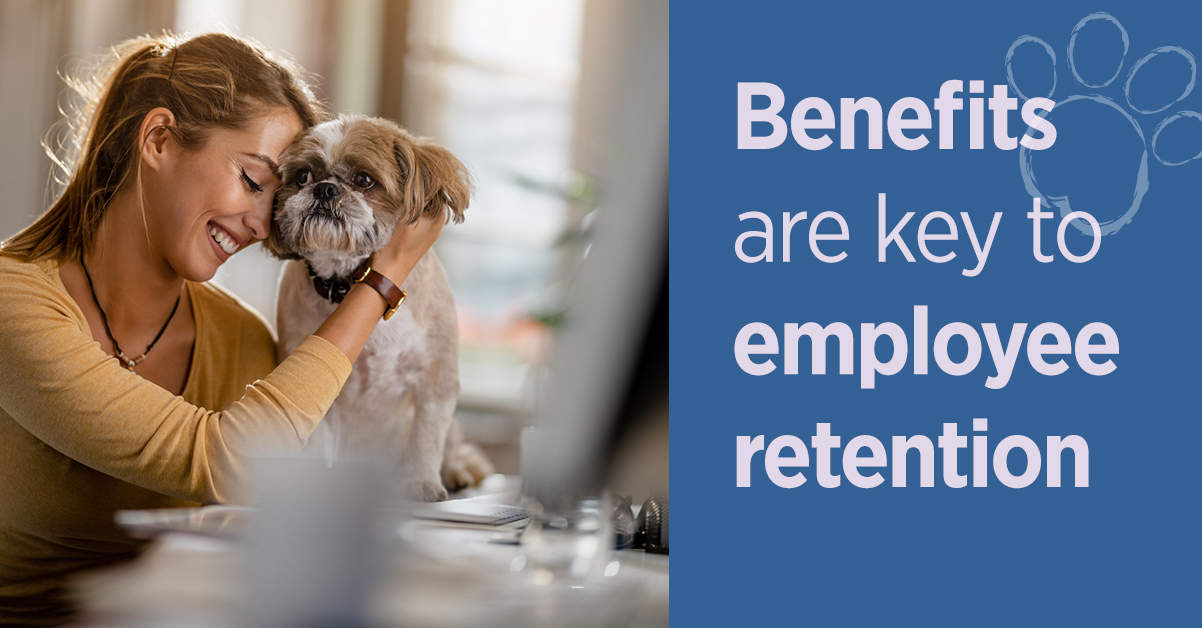 7341 January-2020-HR-Pet-Gazette-Header-Banners NEWS-FOR-HR
7341 January-2020-HR-Pet-Gazette-Header-Banners NEWS-FOR-HRBetter Your Benefits to Raise Retention
If you're worried your employees might start eyeing the exit sometime in the upcoming year, you're not alone. More than 80% of employers are concerned about retention, and their fears aren't unfounded: research from global staffing firm Robert Half reveals that 43% of employees are planning to look for new jobs in the next 12 months1.
It's a trend that isn't likely to end anytime soon, with unemployment near a 50-year low of 3.7% and employees empowered to pick and choose among many options for their career paths. Here's what you need to know to stay ahead.
Choice is critical
You might think salary is the prime motivator for employees to change jobs—but benefits also have a significant role to play as part of a total compensation package that can encourage your best people to commit long-term. No longer enticed by standard benefits packages, today’s employees are looking for flexibility, choice, and non-traditional options. In a 2018 survey by MetLife2, 73% of respondents said that having benefits customized to their needs would increase their loyalty, and 60% expressed interest in having a wider array of non-medical benefits available through their employers. And employers have already begun responding, increasing their benefits in an effort to stay competitive and offer more of the choice workers want. In fact, according to the annual Business Pulse Survey by SunTrust, a full 43% of companies increased their benefits in 2019, with more certain to follow suit in the year ahead.
Personalization can help
Clearly, voluntary benefits offer an opportunity to sweeten the deal and help attract and retain talent. But what’s the best way to create packages that can make a difference when candidates are considering an offer, or existing employees are deciding to stay or go? Experts recommend starting by identifying what matters most to them, and then building in options that let them customize their benefits to fit their needs. While different generations have specific concerns—including student loans for Gen Z and Millennials, credit-card debt for Gen X, and retirement for Baby Boomers4—all share common interests as well. Opportunities to personalize their benefit selections include:
Pet insurance to help pet owners—who represent 75% of the workforce—more easily care for their furry best friends
Floating holidays to let employees build their work schedules around their own cultural and family traditions
Flexible financial tools and programs to help younger employees manage debt and older employees plan for retirement
Overall, recognizing employees as individuals and taking their unique lifestyles and situations into account will make them feel seen and appreciated, which in turn will help them feel more valued—and more likely to stay and grow where they are.
Connect the dots
Maybe you’ve already considered many of these issues and incorporated measures into your benefits offering to address them. If so, education is the next step. According to a survey by Randstad US5, only 48% of employees know all the perks their employers offer, and even fewer report that their employers help them understand those benefits—which means they may be missing out on offerings that are already in place to meet their needs. Combat the lack of information, and make your benefits stand out, with a personalized, relatable campaign that lets your staff know exactly what’s available and how they can take advantage of it. With thoughtful planning and communication, you can increase the likelihood of your top talent staying to enrich your organization for years to come.
